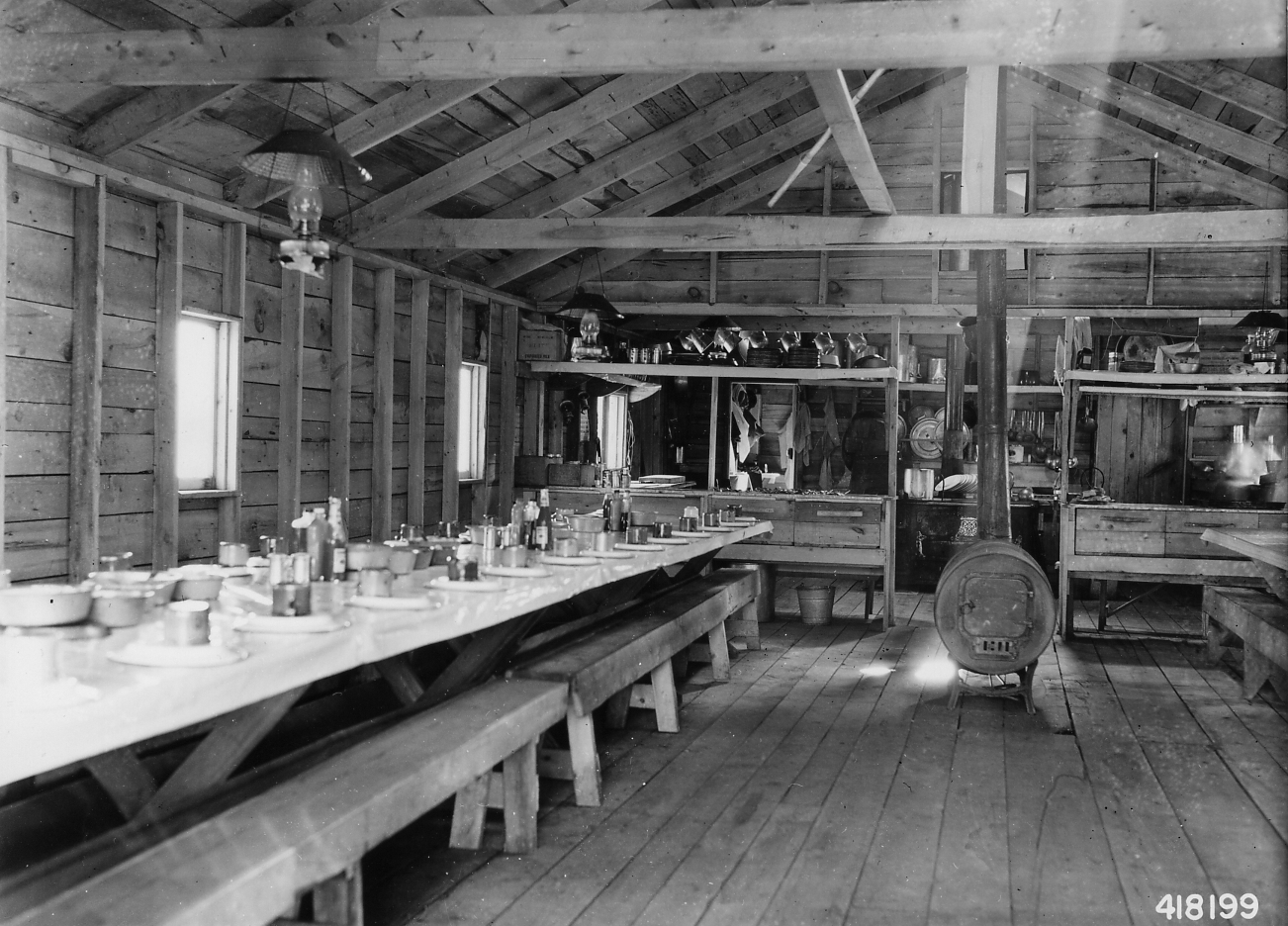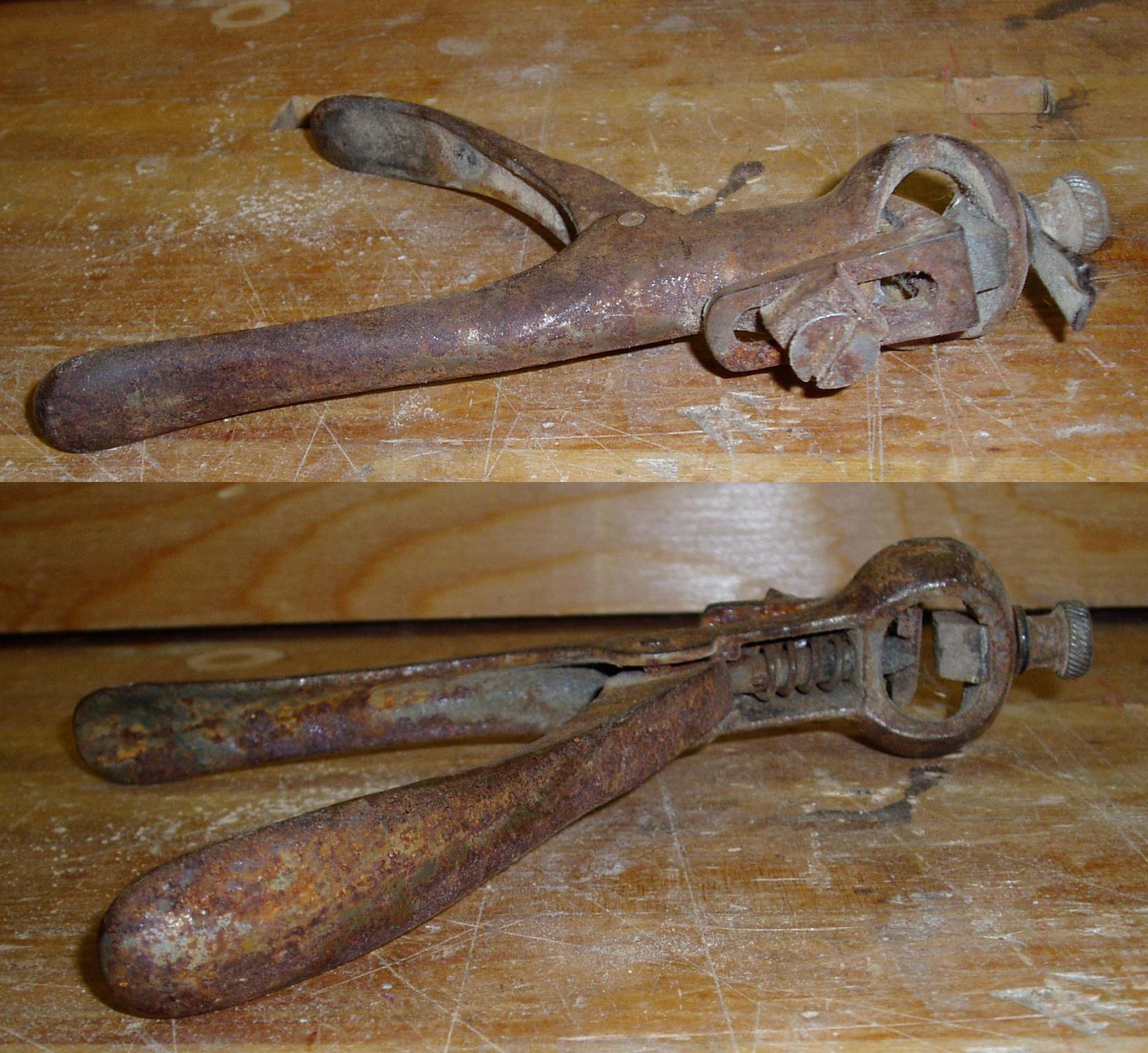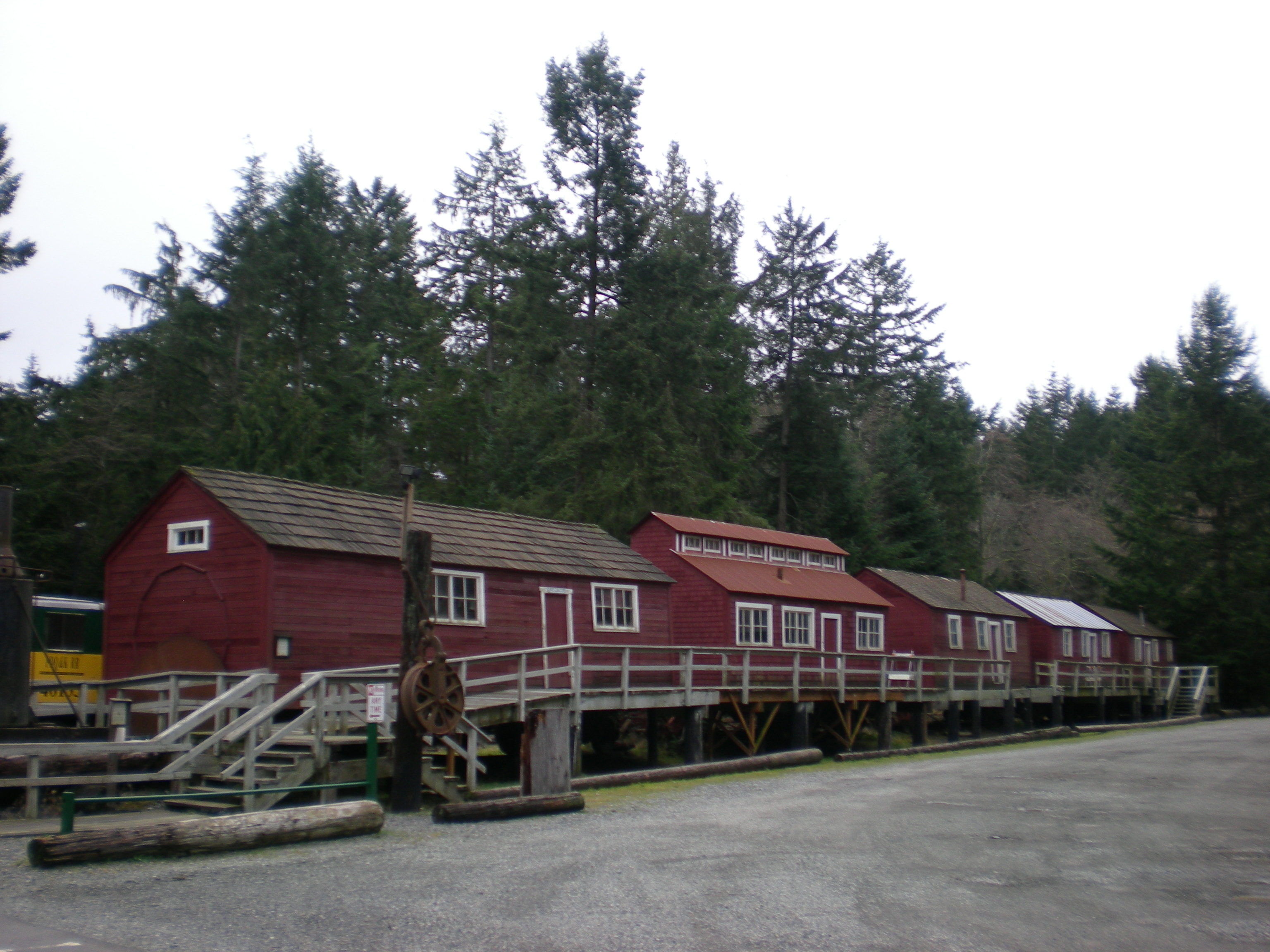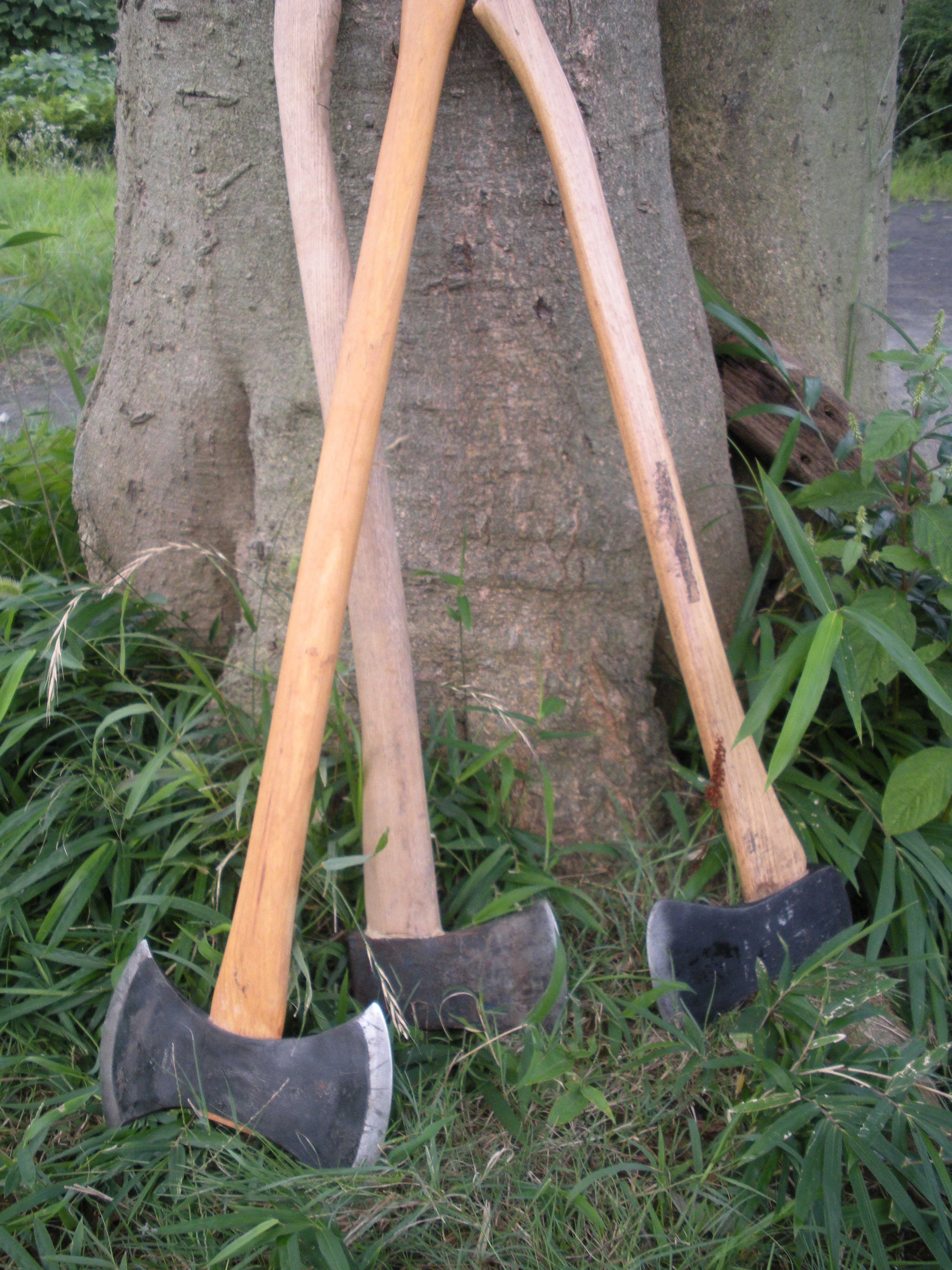 |
Logging Camp
A logging camp (or lumber camp) is a transitory work site used in the logging industry. Before the second half of the 20th century, these camps were the primary place where lumberjacks would live and work to fell trees in a particular area. Many place names (e.g. Bockman Lumber Camp, Colorado, Bockman Lumber Camp, Whitestone Logging Camp, Alaska, Whitestone Logging Camp, Camp Douglas, Wisconsin, Camp Douglas) are legacies of old logging camps. Camps were often placed next to river tributaries so that the winter's log harvest could be floated to the lumbermills in the spring. Design The requirements of the logging industry involved the creation of a working site and housing from the wilderness, pristine wilderness. The construction of the logging camp consisted of a transformation of the natural environment to the built environment. Logging was seasonal in nature, with farmers often working as lumberjacks during the winter. Camps were placed next to a river so that the logs harvest ... [...More Info...] [...Related Items...] OR: [Wikipedia] [Google] [Baidu] |
 |
Loggers In Front Of Logging Camp Building (3229802472)
Lumberjack is a mostly North American term for workers in the logging industry who perform the initial harvesting and transport of trees. The term usually refers to loggers in the era before 1945 in the United States, when trees were felled using hand tools and dragged by oxen to rivers. The work was difficult, dangerous, intermittent, low-paying, and involved living in primitive conditions. However, the men built a traditional culture that celebrated strength, masculinity, confrontation with danger, and resistance to modernization. Term The term lumberjack is of Canadian derivation. The first attested use of the term combining its two components comes from an 1831 letter to the Cobourg, Ontario, ''Star and General Advertiser'' in the following passage: "my misfortunes have been brought upon me chiefly by an incorrigible, though perhaps useful, race of mortals called lumberjacks, whom, however, I would name the Cossacks of Upper Canada, who, having been reared among the ... [...More Info...] [...Related Items...] OR: [Wikipedia] [Google] [Baidu] |
 |
Saw Set
A saw set is a tool or part of the tool kit for tuning saw blades. It adjusts the ''set'', or distance the saw tooth is bent away from the saw blade. The magnitude of set determines the cut width and prevents the blade of the saw from binding in the wood. Many different manual and automated saw sets have been developed since at least the 19th century. Purpose When the teeth of a saw are formed from the body, they are in line and the same thickness as the blade immediately behind them. A saw with this configuration is described as having 'no' or '0' set. To prevent the body of the blade binding and for other enhancements to the cutting action, the teeth can be set (angled out) from the blade. Teeth can be set in several patterns: single-sided set, alternating set or a patterned set. Most Western and Asian handsaws use an alternating set, whereby a tooth is set the opposite direction from the preceding one. Specialized tools like veneer saws or flush-cut saws may be set only to ... [...More Info...] [...Related Items...] OR: [Wikipedia] [Google] [Baidu] |
|
Man Camp
Man camps are temporary workforce housing to accommodate a large influx of high-paid workers in the Extractivism, resource extraction industries, especially in Canada and the United States. Twentieth century boom–bust housing cycles related to the oil and gas industry made companies reluctant to invest in permanent housing for temporary workforces. The term 'man camp' was popularized in association with the North Dakota oil boom, Bakken oil boom in North Dakota. Media and photography depicting the transient workers drawn to this boom led ''The New York Times'' to select 'man camp' as one of the most important words of 2012. Workforces in the resource extraction industries are overwhelmingly male, and studies of man camps conclude that they are hyper-masculine environments—although they do include some women. Man camps are frequently located in remote locations and can overwhelm local infrastructure and emergency services. One study of man camps documented three distinct ty ... [...More Info...] [...Related Items...] OR: [Wikipedia] [Google] [Baidu] |
|
 |
Camp 6 Logging Museum
Camp 6 Logging Museum was located on a forested site inside Point Defiance Park in Tacoma, Washington. Established in 1964 as the Camp Six Logging Exhibit by Western Forest Industries Museum, Inc by members of the Logging Industry in Washington State. Designed by logging engineers, Camp 6 included a replica of an operating railroad connecting the working sites with the bunk houses and bunk cars of the camp. The museum was a National Register of Historic Places, National Registered Historic Place, and featured several historic buildings and over 500 tons railroad and logging equipment. Many pieces of equipment were powered by steam. Background The museum was last operated by the Tacoma Chapter of the National Railway Historical Society from 1989 to 2010, staffed by volunteers, and funded by individual and corporate donations. Camp 6 was closed December 2010 when Public and Private funding ran out and forced the closing. All of the equipment was removed to other Museums in Washing ... [...More Info...] [...Related Items...] OR: [Wikipedia] [Google] [Baidu] |
|
Holt And Balcom Logging Camp No
Holt or holte may refer to: Natural world *Holt (den), an otter den * Holt, an area of woodland Places Australia * Holt, Australian Capital Territory * Division of Holt, an electoral district in the Australian House of Representatives in Victoria Canada * Holt, Ontario, a hamlet Denmark * Holte, a town in Rudersdal municipality, Copenhagen county Germany * Holt, Germany, a municipality in Schleswig-Holstein Iceland *Holt (Akureyri), a residence in Sandgerðisbót Akureyri *Skálholt, the first bishopric of medieval Iceland and the site of a cathedral The Netherlands * Holt, Overijssel, a town in Overijssel Norway * Holt, Aust-Agder, a former municipality in Aust-Agder county, Norway (now a part of Tvedestrand municipality) Romania * Holt, a village in Letea Veche Commune, Bacău County United Kingdom * Holt, Dorset ** Holt Heath, Dorset * Holt Town, Manchester *Holt, Norfolk **Holt (North Norfolk Railway) railway station ** Holt railway station, a closed station n ... [...More Info...] [...Related Items...] OR: [Wikipedia] [Google] [Baidu] |
|
|
Calories
The calorie is a unit of energy that originated from the caloric theory of heat. The large calorie, food calorie, dietary calorie, kilocalorie, or kilogram calorie is defined as the amount of heat needed to raise the temperature of one liter of water by one degree Celsius (or one kelvin). The small calorie or gram calorie is defined as the amount of heat needed to cause the same increase in one milliliter of water. Thus, 1 large calorie is equal to 1,000 small calories. In nutrition and food science, the term ''calorie'' and the symbol ''cal'' may refer to the large unit or to the small unit in different regions of the world. It is generally used in publications and package labels to express the energy value of foods in per serving or per weight, recommended dietary caloric intake, metabolic rates, etc. Some authors recommend the spelling ''Calorie'' and the symbol ''Cal'' (both with a capital C) if the large calorie is meant, to avoid confusion; however, this convention ... [...More Info...] [...Related Items...] OR: [Wikipedia] [Google] [Baidu] |
|
 |
Photograph Of Mess Hall At A Logging Camp - NARA - 2129369
A photograph (also known as a photo, or more generically referred to as an ''image'' or ''picture'') is an image created by light falling on a photosensitive surface, usually photographic film or an electronic image sensor. The process and practice of creating such images is called photography. Most photographs are now created using a smartphone or camera, which uses a lens to focus the scene's visible wavelengths of light into a reproduction of what the human eye would perceive. Etymology The word ''photograph'' was coined in 1839 by Sir John Herschel and is based on the Greek φῶς (''phos''), meaning "light", and γραφή (''graphê''), meaning "drawing, writing", together meaning "drawing with light". History The first permanent photograph, a contact-exposed copy of an engraving, was made in 1822 using the bitumen-based "heliography" process developed by Nicéphore Niépce. The first photographs of a real-world scene, made using a camera obscura, followed a few year ... [...More Info...] [...Related Items...] OR: [Wikipedia] [Google] [Baidu] |
 |
World War II
World War II or the Second World War (1 September 1939 – 2 September 1945) was a World war, global conflict between two coalitions: the Allies of World War II, Allies and the Axis powers. World War II by country, Nearly all of the world's countries participated, with many nations mobilising all resources in pursuit of total war. Tanks in World War II, Tanks and Air warfare of World War II, aircraft played major roles, enabling the strategic bombing of cities and delivery of the Atomic bombings of Hiroshima and Nagasaki, first and only nuclear weapons ever used in war. World War II is the List of wars by death toll, deadliest conflict in history, causing World War II casualties, the death of 70 to 85 million people, more than half of whom were civilians. Millions died in genocides, including the Holocaust, and by massacres, starvation, and disease. After the Allied victory, Allied-occupied Germany, Germany, Allied-occupied Austria, Austria, Occupation of Japan, Japan, a ... [...More Info...] [...Related Items...] OR: [Wikipedia] [Google] [Baidu] |
 |
Log Driving
Log driving is a means of moving logs (sawn tree trunks) from a forest to sawmills and pulp mills downstream using the current of a river. It was the main transportation method of the early logging industry in Europe and North America. History When the first sawmills were established, they were usually small water-powered facilities located near the source of timber, which might be converted to grist mills after farming became established when the forests had been cleared. Later, bigger circular sawmills were developed in the lower reaches of a river, with the logs floated down to them by log drivers. In the broader, slower stretches of a river, the logs might be bound together into timber rafts. In the smaller, wilder stretches of a river where rafts couldn't get through, masses of individual logs were driven down the river like huge herds of cattle. "Log floating" in Sweden (''timmerflottning'') had begun by the 16th century, and 17th century in Finland (''tukinuitto''). Th ... [...More Info...] [...Related Items...] OR: [Wikipedia] [Google] [Baidu] |
|
Trading Post
A trading post, trading station, or trading house, also known as a factory in European and colonial contexts, is an establishment or settlement where goods and services could be traded. Typically a trading post allows people from one geographic area to exchange for goods produced in another area. Usually money is not used. The barter that occurs often includes an aspect of haggling. In some examples, local inhabitants can use a trading post to exchange what they have (such as locally-harvested furs) for goods they wish to acquire (such as manufactured trade goods imported from industrialized places). Given bulk transportation costs, exchanges made at a trading post for long-distance distribution can involve items which either party or both parties regard as luxury goods. A trading post can consist either of a single building or of an entire town. Trading posts have been established in a range of areas, including relatively remote ones, but most often near an ocean, a ri ... [...More Info...] [...Related Items...] OR: [Wikipedia] [Google] [Baidu] |
|
 |
File (tool)
A file is a tool used to remove fine amounts of material from a workpiece. It is common in woodworking, metalworking, and other similar trade and hobby tasks. Most are hand tools, made of a case hardened steel bar of rectangular, square, triangular, or round cross-section, with one or more surfaces cut with sharp, generally parallel Tine (structural), teeth. A narrow, pointed Tang (tools), tang is common at one end, to which a handle may be fitted.. A rasp is a form of file with distinct, individually cut teeth used for coarsely removing large amounts of material. Files have also been developed with abrasive surfaces, such as natural or synthetic diamond tool, diamond grains or silicon carbide, allowing removal of material that would dull or resist steel files, such as ceramic. History Early filing or rasping has prehistoric roots and grew naturally out of the blending of the twin inspirations of cutting with stone cutting tools (such as hand axes) and abrasive, abrading u ... [...More Info...] [...Related Items...] OR: [Wikipedia] [Google] [Baidu] |
 |
Lumberjack
Lumberjack is a mostly North American term for workers in the logging industry who perform the initial harvesting and transport of trees. The term usually refers to loggers in the era before 1945 in the United States, when trees were felled using hand tools and dragged by oxen to rivers. The work was difficult, dangerous, intermittent, low-paying, and involved living in primitive conditions. However, the men built a traditional culture that celebrated strength, masculinity, confrontation with danger, and resistance to modernization. Term The term lumberjack is of Canadian derivation. The first attested use of the term combining its two components comes from an 1831 letter to the Cobourg, Ontario, ''Star and General Advertiser'' in the following passage: "my misfortunes have been brought upon me chiefly by an incorrigible, though perhaps useful, race of mortals called lumberjacks, whom, however, I would name the Cossacks of Upper Canada, who, having been reared among the ... [...More Info...] [...Related Items...] OR: [Wikipedia] [Google] [Baidu] |